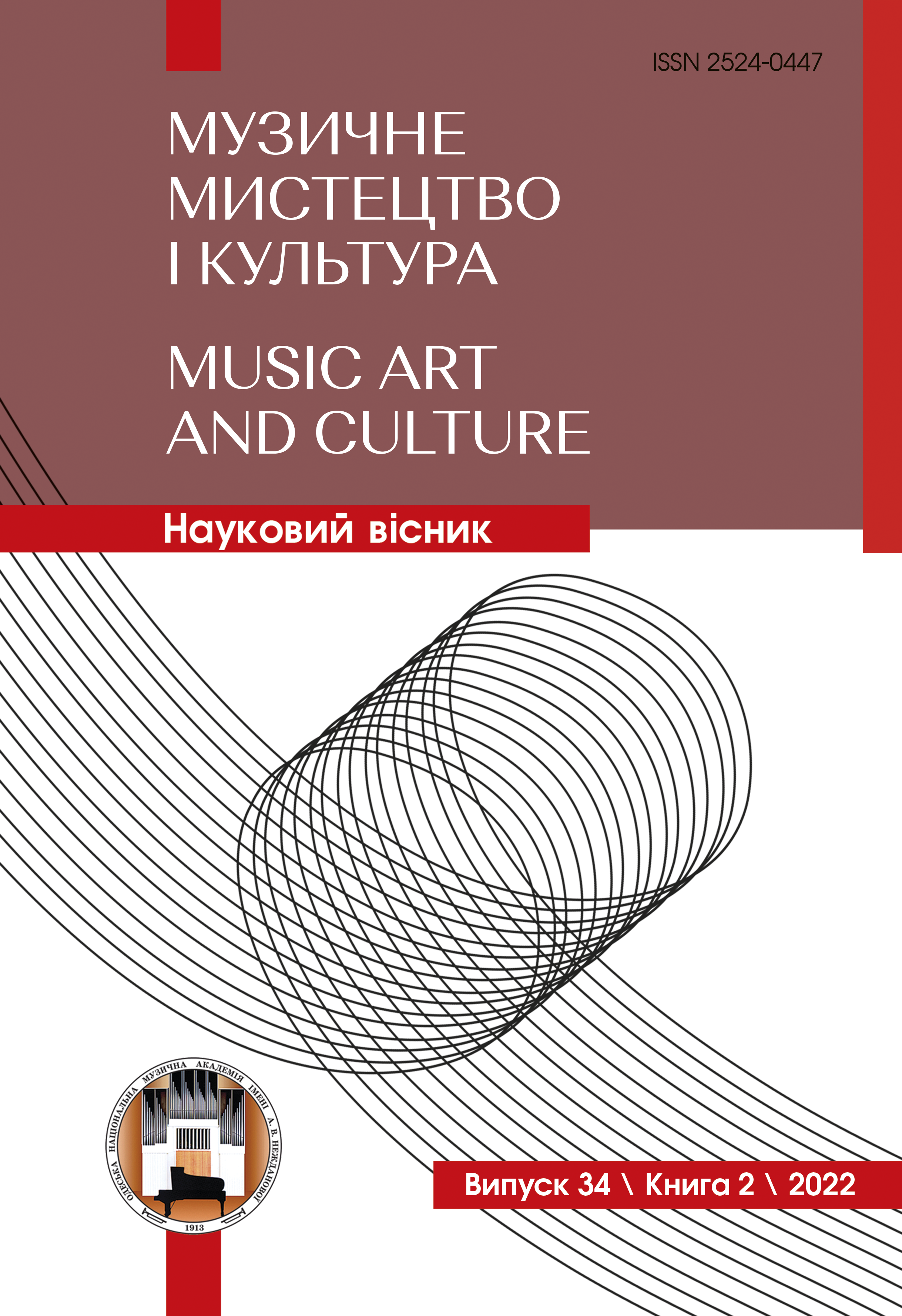ТРАДИЦІЯ ВИКОНАННЯ РОЗСПІВУ ЯК СТАТУТНОЇ ЦЕРКОВНОЇ ДИСЦИПЛІНИ
Анотація
Мета роботи – систематизація настанов щодо оцінки, виконання (способу інтонування) та сприймання під час практичного втілення богослужебного співу у його статутних формах. Методологія дослідження базується на компаративному аналізі співу сучасних різноетнічних практиків візантійськоі церковно-співочої культури, створенні логіко-структурної моделі інтонування, придатної для озвучування богослужіння адаптованими до церковнослов’янських текстів піснеспівами. Наукова новизна: вперше зроблено спробу сформулювати та інтегрувати всі необхідні практичні риси для статутно правильного способу інтонування візантійського літургійного співу; конкретизовано термінологію щодо статутного церковного співу у контексті загальної культури літургійного інтонування. Висновки. У процесі дослідження статутних форм літургійного мистецтва як аскетичної дисципліни визначено декілька основних віх для їхнього правильного розуміння, виконання і сприймання, а також сформульовано та уточнено декілька термінів відносно церковного мистецтва в цілому та звукового наповнення богослужіння зокрема. На основі загального історичного огляду здійснено спробу змістити термінологічний акцент відносно основного виду розспівної традиції Русі зі знаменного розспіву у бік стовпового розспіву. Результати дослідження дозволяють наголосити на виключно мелодійній основі в статутній культурі церковного співу та її переважанні над гармонією (навіть у багатоголосних етнічних співочих культурах). Крім того вперше акцентовано можливість молитовного домінування мелодії над поетичним текстом в мелізматичному типі викладення. Розглянуто проблеми чіткості вимови тексту в умовах храмової акустики в співі або читанні, зокрема з двома й більше приголосними звуками впритул. Практикам кліросу, які працюють у розспівній традиції, пропонується замість правила вокального переносу, притаманному традиційному способу вокалізації, повернутися до стародавнього прийому доцільної роздільномовності. В цілому у дослідженні вказано на проблеми озвучання богослужіння православної церкви і надано певні настанови практикам відродження розспівної культури церковного співу.
Посилання
2. Сахно И. Л. Византийское литургическое пение на современном этапе: соотношение устной и письменной традиций. Диссертация на здобуття вченої ступені кандидата мистецтвознавства. Харків, 2012. 263 с.
3. Сахно И. Л. Разумное раздельноречие // Проблеми взаємодії мистецтва, педагогіки та теорії і практики освіти : зб. наук. пр., вип. 43. Харків, 2015. С. 278–290.




 Музичне мистецтво і культура
Музичне мистецтво і культура